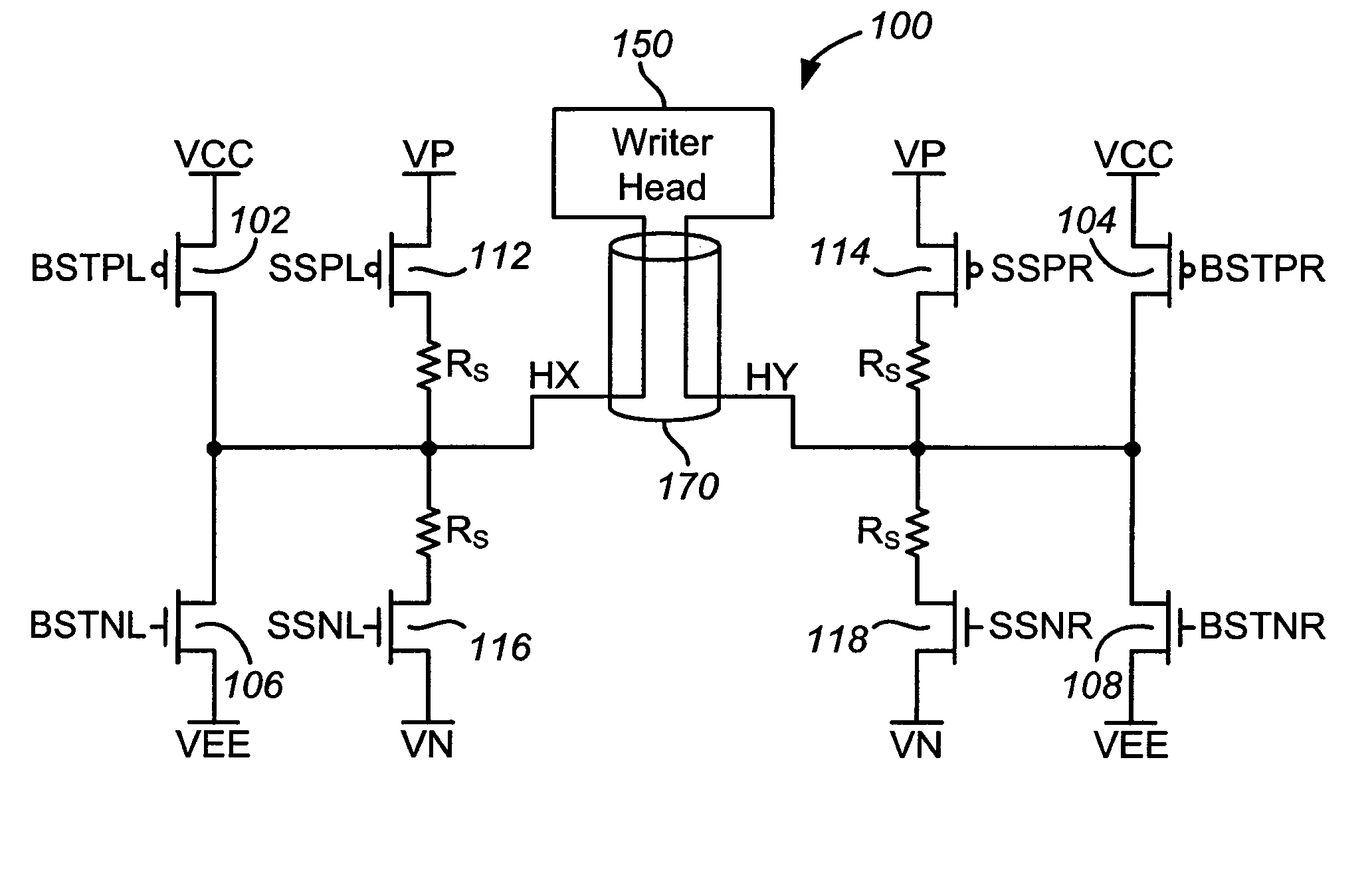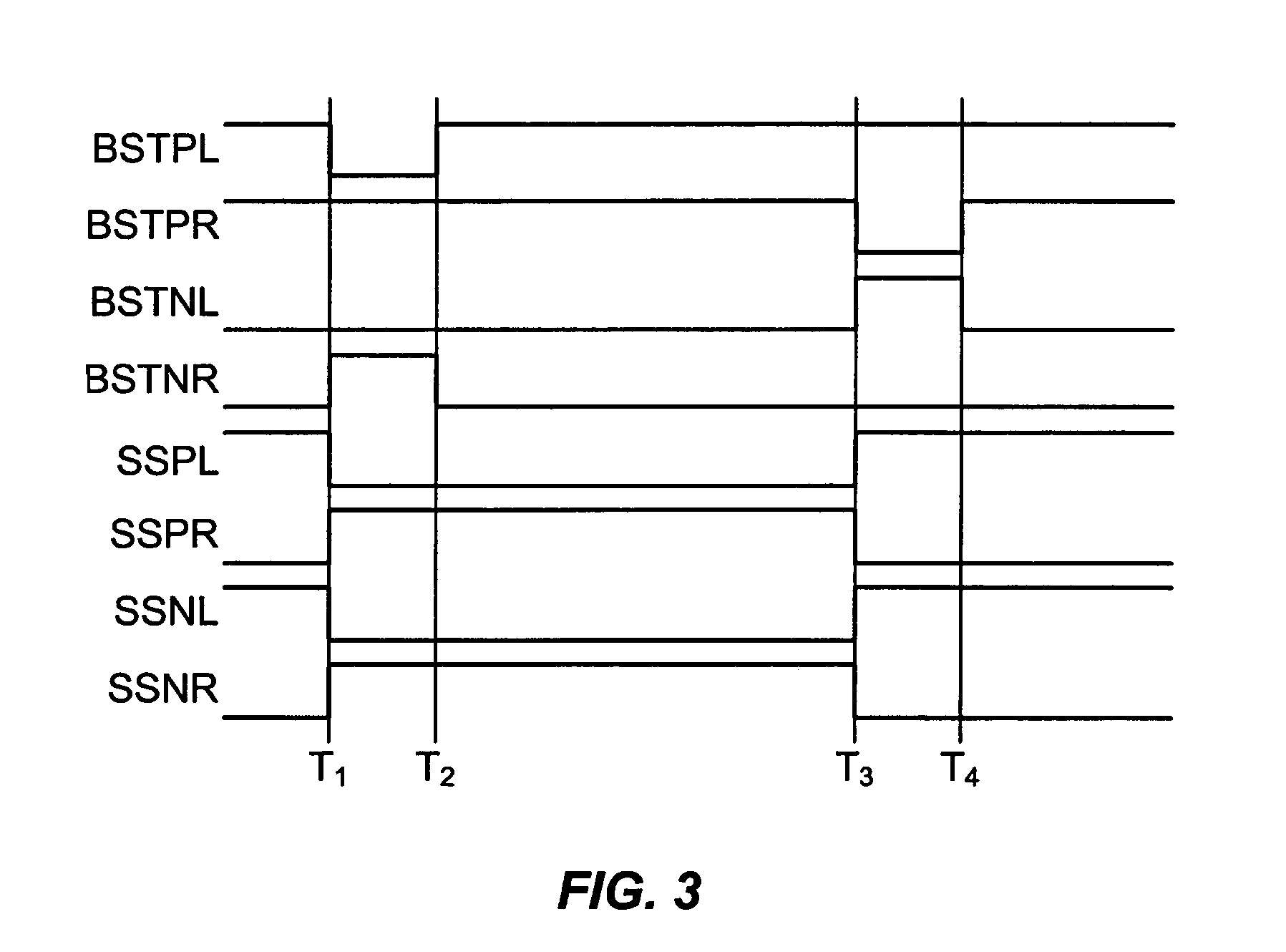Low power preamplifier writer architecture
a preamplifier and writer technology, applied in the direction of pulse technique, motor/generator/converter stopper, dynamo-electric converter control, etc., can solve the problem of relatively high power consumption of the driver circuit b>100/b>
- Summary
- Abstract
- Description
- Claims
- Application Information
AI Technical Summary
Benefits of technology
Problems solved by technology
Method used
Image
Examples
exemplary embodiment 250
[0031]Driver circuit 200 is also shown as including, in part, a switch circuit 250 that is disposed between nodes Hx and Hy, and when activated, provides a current path between these two nodes. Exemplary embodiment 250 of this switch circuit is shown as including resistors 252, 254, NMOS transistors 256, 258 and PMOS transistor 260. Resistor 252 has a first terminal coupled to node Hx, and a second terminal coupled to one of the current carrying terminals of NMOS transistor 256. Resistor 254 has a first terminal coupled to node Hy, and a second terminal coupled to one of the current carrying terminals of NMOS transistor 258. The second current carrying terminal of transistor 256 is coupled to a first current carrying terminal of PMOS transistor 260 whose second current carrying terminal is coupled to the second current carrying terminal of transistor 258. Nodes Hx and Hy see a balanced load due to the symmetry provided by resistors 252, 254, as well as transistors 256, 258, 260 disp...
exemplary embodiment 200
[0038]As seen from expression (4), during the steady state periods, the current consumption of exemplary embodiment 200 of the present invention, does not depend on any negative supply voltage. This is in contrast to the prior art driver circuit 100 shown in FIG. 1, whose current consumption during the steady state periods depends both on the positive supply voltage VCC as well as the negative supply voltage VEE. Accordingly, driver circuit 200 of the present invention has a reduced current consumption relative to the prior art driver circuits.
[0039]FIG. 5 is a timing diagram of a number of signals associated with driver circuit 200. During the first boost period TB1, voltage signal BSTPL is lowered, voltage signal BSTNL is maintained low, voltage signal BSTPR is maintained high and voltage signal BSTNR is raised to a high level. Accordingly, transistors 202, 208 are turned on and transistors 204, 206 are turned off or maintained off. Therefore, a current path is established from su...
PUM
 Login to View More
Login to View More Abstract
Description
Claims
Application Information
 Login to View More
Login to View More - R&D
- Intellectual Property
- Life Sciences
- Materials
- Tech Scout
- Unparalleled Data Quality
- Higher Quality Content
- 60% Fewer Hallucinations
Browse by: Latest US Patents, China's latest patents, Technical Efficacy Thesaurus, Application Domain, Technology Topic, Popular Technical Reports.
© 2025 PatSnap. All rights reserved.Legal|Privacy policy|Modern Slavery Act Transparency Statement|Sitemap|About US| Contact US: help@patsnap.com



